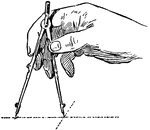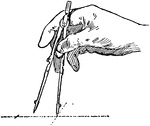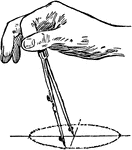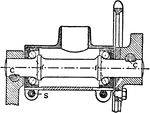Clipart tagged: ‘adjusting’

Adjusting the Compass
In changing the compass from a small to large radius, hold the legs together with one hand and spin…

Compass Adjustment
To properly change the compass from one size to another, make sure to place legs together while turning…

Adjusting the Compass
In changing the compass from a small to large radius, hold the legs together with one hand and spin…

Turning the Compass
A compass is a navigational instrument for determining direction relative to the poles.

Crank-axle Bearing
"The usual form of crank-axle bearing which has inward-cups and is cup-adjusting. The end of the bracket…

Cup-adjusting Hub
"One end of the cup-adjusting hub, with inward bearings. The cones are formed of one piece with the…